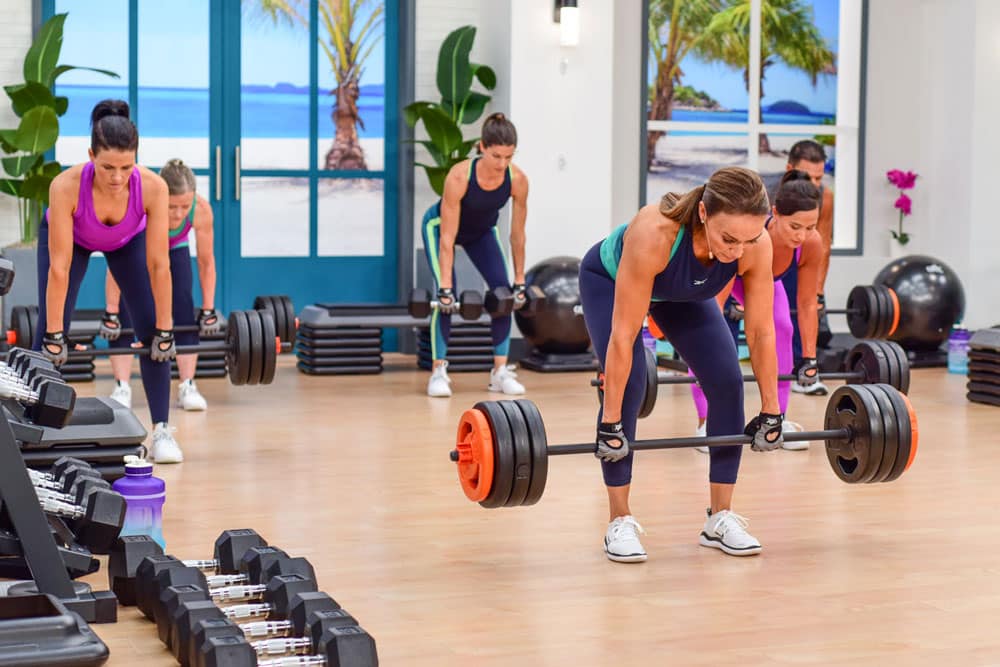As one of the most fundamental strength exercises, the deadlift is a staple in many athletes’ training routines. Whether you’re an experienced powerlifter or a novice gym-goer looking to build functional strength, the deadlift is an effective way to target multiple muscle groups and boost athletic performance.
But what many people fail to recognize is the critical role grip strength plays in maximizing deadlift performance. Grip strength is often a limiting factor for many athletes, keeping them from lifting heavier weights and achieving their full potential. Let’s delve into the science behind grip strength and explore practical strategies for improving your grip to enhance your deadlift performance.
The Mechanics of the Deadlift
The deadlift is a compound exercise. The motion consists of lifting a weighted barbell from the ground to a standing position. When you perform this exercise, you mainly target the muscles of the posterior chain, including the erector spinae, glutes, and hamstrings. Deadlifts are a favorite with athletic coaches since they improve overall strength, power, and muscular hypertrophy.
Types of Deadlift Grips
When performing deadlifts, you have the option of using one of several grips, each with its own set of advantages and disadvantages. The most common types of deadlift grips include the overhand grip, the mixed grip, and the hook grip.
The overhand grip is where you place both hands on the barbell with the palms facing toward your body. This grip is a natural and straightforward way to hold the barbell, and it helps develop balanced strength in the forearms. However, as the weight increases, the overhand grip can become challenging as the barbell could slip from your hands as you increase the weight, and your hands get sweaty.
The underhand grip is when you grasp the bar from underneath with your palms facing away from you. The mixed grip involves placing one hand on the barbell with the palm facing up and the other hand with the palm facing down. This grip can prevent the barbell from slipping and allow you to lift more weight, making it a popular choice for heavy deadlifts. However, it can create imbalances in the strength of the forearms and increase the risk of injury, particularly if you fail to maintain proper form.
The hook grip involves wrapping the fingers around the thumb and then gripping the barbell with the palms facing downward. This grip may feel uncomfortable at first, but it can provide a secure grip on the barbell and prevent it from slipping. The hook grip also allows for a more even distribution of weight between the hands, reducing the risk of imbalances in the strength of the forearms. However, the hook grip can be challenging to maintain as the weight increases and can cause discomfort or pain in the thumbs.
The grip you choose will depend on your personal preference and goals. Experimenting with different grip types is essential to find the one that feels most comfortable and secure for your deadlift training. Incorporating grip-specific exercises into your training program can also help upgrade your grip strength and improve deadlift performance.
The Role of Grip Strength for Performing Deadlifts
Grip strength is critical for performing the deadlift exercise effectively. A weak grip can lead to several problems when performing a deadlift. Firstly, it can cause the barbell to slip from your hands, leading to a failed lift. Not only is this frustrating but it can negatively impact confidence in your ability to perform the exercise.
Secondly, a weak grip can put you at risk of injury. When the barbell slips, it could cause you to lose your balance and potentially drop the weight. Therefore, it is essential to train and develop grip strength to ensure safe and effective deadlifts.
As you focus on improving your lifting technique and increasing the amount of weight you can lift, don’t overlook the role that grip strength plays in your overall performance. A strong grip provides a foundation for many lifts, including deadlifts, pull-ups, and rows.
Plus, a strong grip also helps to engage the muscles of the forearms, which play a crucial role in stabilizing the barbell during the lift, leading to greater overall strength gains. For these reasons, grip strength training is an essential component of any deadlift training program.
How to Improve Grip Strength for Deadlifts
There are several exercises you can do to improve your grip strength, such as wrist curls and farmer’s walks. Wrist curls involve using a dumbbell or barbell to curl your wrist up and down, strengthening the muscles that control your grip.
Farmer’s walks are an exercise where you hold heavy weights and walk a certain distance, which improves your grip endurance. By incorporating these exercises into your training regimen, you can improve your grip strength and perform the deadlift with confidence and safety.
Use Grip Strengthening Aids
If you’re looking to improve your deadlift performance, using grip-strengthening tools such as grip strengtheners or chalk is another effective way to increase the strength and endurance of the muscles in your hands and forearms.
Grip strengtheners are devices designed to increase the strength and endurance of the muscles in the hands and forearms. They come in various forms, from hand grippers to grip balls and even resistance bands. By working with grip strengtheners, you can target these specific muscles and increase their strength and endurance over time.
They come in various shapes and sizes, and they’re designed to target the muscles in your hands and forearms specifically. By performing exercises such as squeezing, gripping, and twisting motions with these devices, you can increase your grip strength and endurance, which will help you perform better during deadlifts.
Chalk is another tool to improve grip strength during deadlifts. By applying magnesium carbonate powder to your hands, you can increase friction between your skin and the barbell, which can help you grip the bar better. Chalk also helps to absorb sweat and moisture, which can reduce the risk of the barbell slipping out of your hands during the lift. By improving your grip strength and reducing the risk of slippage, chalk can help you lift heavier weights during deadlifts and improve your overall performance.
If you use these tools, do so in moderation. Over-reliance on these tools can hinder the development of natural grip strength and lead to imbalances in the muscles of your hands and forearms.
Another Reason to Improve Your Grip Strength
Beyond the immediate benefits of improved lifting performance, there are long-term benefits to developing grip strength. For example, studies show that grip strength is a good predictor of overall health and longevity. This is because a strong grip is associated with greater muscle mass, lower body fat, and better cardiovascular health. By incorporating grip-strengthening exercises into your workout routine, you can not only improve your lifting performance but also enhance your health and well-being.
Conclusion
Adding grip-strengthening tools such as grip strengtheners or chalk to your deadlift training program can be an effective way to improve your grip strength and endurance, leading to better performance and increased weight lifted during the lift. However, it’s essential to use these tools in moderation and in combination with proper training techniques to avoid over-reliance and potential muscle imbalances.
References:
- “Deadlift Grip Guide: How Hand Placement Changes the Exercise.” 13 Apr. 2015, https://www.stack.com/a/deadlift-grip/.
- Fischer SC, Calley DQ, Hollman JH. Effect of an Exercise Program That Includes Deadlifts on Low Back Pain. J Sport Rehabil. 2021 Feb 24;30(4):672-675. doi: 10.1123/jsr.2020-0324. PMID: 33626500.
- Electromyographic activity in deadlift exercise and its variants. A systematic review | PLOS ONE (2023). Available at: https://journals.plos.org/plosone/article?id=10.1371/journal.pone.0229507 (Accessed: 29 April 2023).
Related Articles By Cathe:
5 Types of Deadlifts and How They Differ
Conventional Deadlifts vs. Romanian Deadlifts: Which Activate the Glutes More?
5 Powerful Reasons to Include Deadlifts in Your Fitness Routine
Glute Power! Why You Need Hip Thrusts in Your Routine
How Effective Are Deadlifts for Glute Development?
3 Most Effective Full Body Resistance Exercises
Why Deadlifts are Good for You
Related Cathe Friedrich Workout DVDs:
STS 2.0 Muscle & Recovery Workout Program
STS Strength 90 Day Workout Program
All of Cathe’s Strength & Toning Workout DVDs









